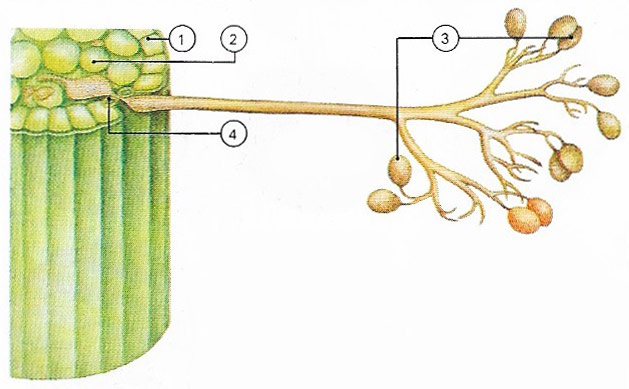mildew

Figure 1. Downy mildew in cabbage is a sign of attack by Peronospora parasitica, a fungus that enters the plant through the epidermis (1) then ramifies, sending forked feeding tubes into living cells (2). Fungal filaments bearing dispersal spores (conidia) (3) cause the white mildewy appearance. The spore-bearing filaments emerge through the stomata (4) of the plant.
Mildew is the general name for the superficial growth of many types of fungi often found on plants and material derived from plants. Powdery mildews are caused by fungi belonging to the Ascomycetes order Erysiphales, the powdery effect being due to the masses of spores). These fungi commonly infest roses, apples, phlox, melons, etc. Downy mildews (Figure 1) are caused by Phycomycetes. They commonly infest many vegetable crops. Both types of disease can be controlled by used of fungicides.


